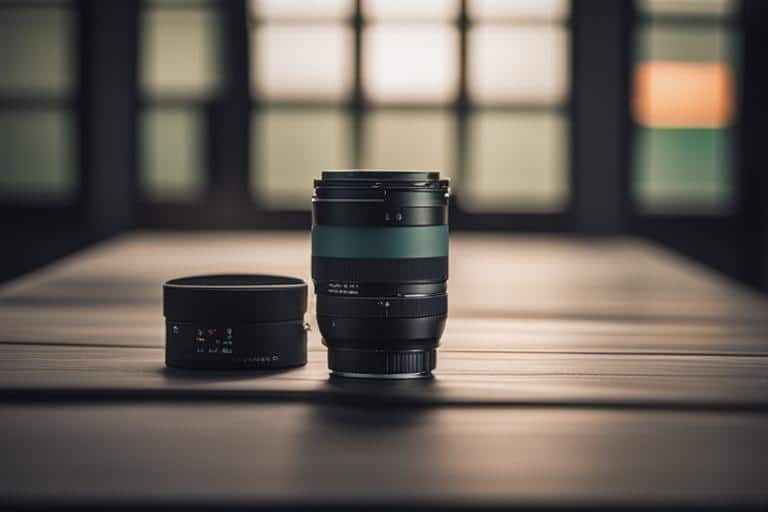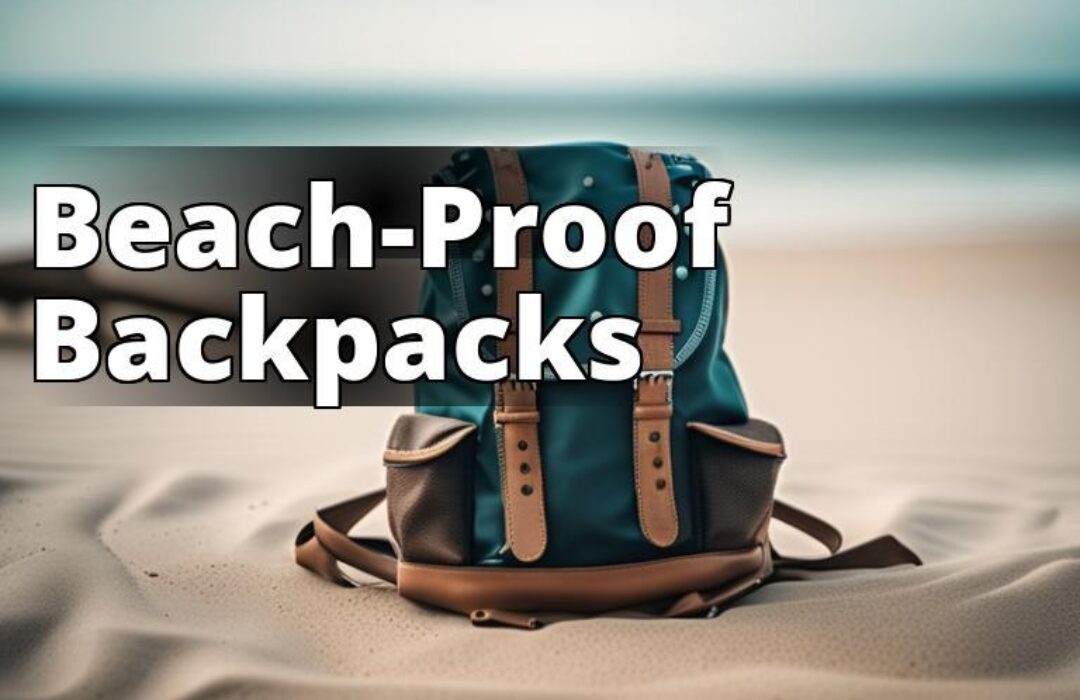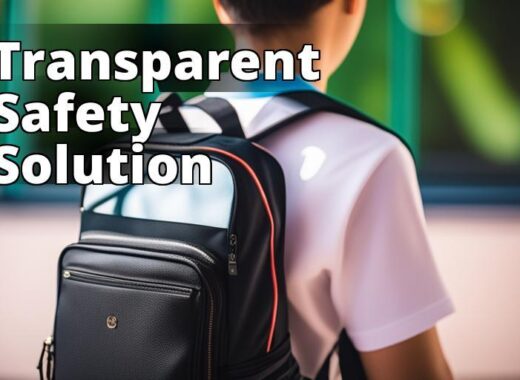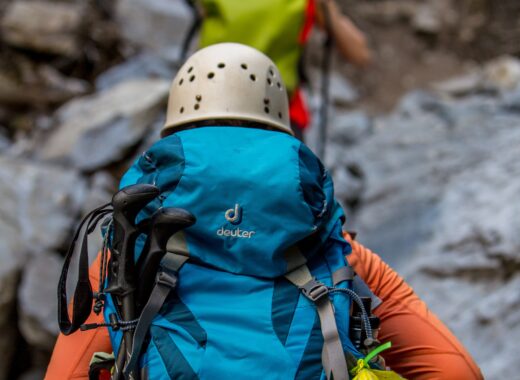Are you heading to the beach and looking for a way to keep your belongings safe and dry? Waterproof backpacks are the perfect solution. But with so many different materials available, it can be challenging to determine which one is right for you. In this article, we’ll explore the best waterproof materials for beach backpacks and provide examples of backpacks that use each material.
Best Waterproof Materials for Beach Backpacks
Learn about the best waterproof materials for beach backpacks such as PVC, TPU, and Silicone Coated Fabrics. Discover the benefits and drawbacks of each material and factors to consider when choosing a waterproof material. Additionally, find out about other waterproofing techniques and tips for maintaining the waterproofing of beach backpacks.
Why Waterproof Materials are Important for Beach Backpacks
Water and sand can be harmful to your belongings, from electronics to clothes to food. Waterproof backpacks provide the best way to keep your items dry and safe. They also protect your belongings from mold and mildew, which thrives in damp environments. If you’re carrying valuable items, such as cameras or phones, a waterproof backpack is essential to prevent water damage.

Types of Waterproof Materials
Several types of waterproof materials are used in beach backpacks. Here are the most common:
PVC (Polyvinyl Chloride)
PVC is a synthetic plastic material that is durable and resistant to abrasions and punctures. PVC backpacks are also easy to clean and maintain. However, PVC is not eco-friendly and can release harmful chemicals during production and disposal. PVC backpacks can also become stiff and brittle in cold temperatures.
Examples: Earth Pak Waterproof Backpack, IDRYBAG Waterproof Backpack
TPU (Thermoplastic Polyurethane)
TPU is a synthetic material that is more eco-friendly than PVC. It’s more flexible and resistant to cold temperatures. TPU backpacks are lightweight and have a soft, rubbery feel. However, TPU backpacks are not as durable as PVC backpacks and can be prone to punctures and abrasions.
Examples: MARCHWAY Floating Waterproof Dry Bag, ZBRO Waterproof Dry Bag Backpack
Silicone Coated Fabrics
Silicone coated fabrics are a blend of synthetic fabrics, such as nylon or polyester, and a silicone coating. They are lightweight, durable, and flexible. Silicone coated backpacks are also eco-friendly and can be recycled. However, silicone coated backpacks can be more expensive than PVC or TPU backpacks.
Examples: Sea to Summit Hydraulic Dry Pack, Vitchelo Waterproof Dry Bag Backpack
Nylon and Polyester
Nylon and polyester are synthetic fabrics that are commonly used in waterproof backpacks. They are lightweight, durable, and flexible. Nylon and polyester backpacks are more affordable than other materials. However, nylon and polyester backpacks are not as waterproof as PVC, TPU, or silicone coated backpacks.
Examples: Chaos Ready Waterproof Backpack, Skog Å Kust BackSåk Waterproof Backpack

Top Waterproof Materials for Beach Backpacks
The best waterproof materials for beach backpacks are PVC, TPU, and silicone coated fabrics. PVC is the most durable material and is resistant to abrasions and punctures. TPU is more flexible and eco-friendly than PVC, but not as durable. Silicone coated fabrics are lightweight, flexible, and eco-friendly, but can be more expensive than other materials.
| Waterproof Rating | Level of Protection | Example Use Case |
|---|---|---|
| IPX-0 | No protection | Not suitable for beach use |
| IPX-1 | Protection against vertically falling water drops | Not suitable for beach use |
| IPX-2 | Protection against vertically falling water drops when tilted at an angle of up to 15 degrees | Not suitable for beach use |
| IPX-3 | Protection against spraying water at an angle of up to 60 degrees | Suitable for light rain or occasional splashes at the beach |
| IPX-4 | Protection against splashing water from any direction | Suitable for light rain or occasional splashes at the beach |
| IPX-5 | Protection against water jets from any direction | Suitable for heavy rain or splashes at the beach |
| IPX-6 | Protection against powerful water jets from any direction | Suitable for heavy rain or splashes at the beach |
| IPX-7 | Protection against immersion in water up to 1 meter for 30 minutes | Suitable for water sports and activities at the beach |
| IPX-8 | Protection against continuous immersion in water for a specified depth | Suitable for water sports and activities at the beach |
Waterproof Ratings
When shopping for a waterproof backpack, it’s essential to consider its waterproof rating. The rating is based on the amount of water pressure the backpack can withstand without leaking. The most common waterproof ratings are IPX-0 to IPX-8. IPX-0 indicates no protection from water, while IPX-8 indicates protection against continuous immersion in water.
Factors to Consider When Choosing a Waterproof Material
When choosing a waterproof material for your beach backpack, consider factors such as the purpose of the backpack, frequency of use, location, cost, durability, and eco-friendliness. For instance, if you’re carrying valuable items, such as electronics or cameras, you’ll want a more durable material, such as PVC. If you’re going to a calmer beach, a more lightweight and flexible material, such as silicone coated fabric, may be sufficient.

Other Waterproofing Techniques
Besides waterproof materials, other techniques can make backpacks waterproof. These include:
Durable Water Repellent (DWR) Coating
DWR is a chemical coating applied to fabrics to make them water-resistant. It causes water to bead up and roll off the surface of the fabric.
Waterproof Zippers
Waterproof zippers keep water out of the backpack through the zipper. They are often used with other waterproofing techniques.
Welded Seams
Welded seams are created by bonding the fabric together with heat and pressure. They create a waterproof seal that prevents water from seeping through the seams.
Care and Maintenance of Waterproof Materials
To keep your waterproof backpack in top condition, follow these tips:
- Avoid exposing your backpack to extreme temperatures or prolonged sunlight, as this can damage the waterproof coating.
- Avoid using harsh chemicals or abrasive materials to clean your backpack.
- Clean your backpack with a damp cloth and mild detergent.
- Air dry your backpack in a cool, dry place.
- Store your backpack in a cool, dry place away from direct sunlight.
- Inspect your backpack regularly for signs of wear and tear, such as cracks or peeling.
Investing in a high-quality waterproof backpack will help keep your belongings safe and dry during your beach trip. Consider the material, waterproof rating, and other important factors before making your purchase. With the right backpack, you can enjoy your beach vacation without worrying about your gear.
Insider Tips:
- Don’t forget to check the waterproof rating of your backpack before purchasing it.
- Consider getting a backpack with multiple compartments to keep your wet and dry items separate.
- Pack a small towel in your backpack to dry off any excess water before storing your items.
Personal Story: The Importance of Waterproof Materials at the Beach
As a frequent beach-goer, I learned the hard way about the importance of having a waterproof backpack. On a particularly hot day, I decided to bring my regular backpack to the beach, not realizing that the combination of sweat and sand would quickly ruin it. After a quick dip in the ocean, I returned to my spot on the sand only to find my phone, wallet, and sunscreen covered in sand and soaked with saltwater. It was a frustrating and expensive lesson to learn.
After that experience, I invested in a beach backpack made of TPU. Not only was it waterproof, but it also had welded seams to ensure no sand or water could sneak in. I could finally relax at the beach without worrying about my belongings getting ruined. Since then, I’ve upgraded to a backpack made of Silicone Coated Fabrics, which is even more durable and eco-friendly.
I now recommend to all my beach-loving friends to invest in a waterproof backpack, and to pay attention to the type of material used. It’s worth the investment to protect your valuable belongings and keep them safe from the elements.
Q & A
Question: Who makes the best waterproof beach backpacks?
Answer: Osprey, Patagonia, and Sea to Summit are top brands.
Question: What materials are best for waterproof beach backpacks?
Answer: Look for nylon, polyester, or PVC-coated fabrics.
Question: How do I know if a backpack is truly waterproof?
Answer: Check for a high waterproof rating and sealed seams.
Question: Who should consider a waterproof beach backpack?
Answer: Anyone who wants to keep their beach gear dry and safe.
Question: What if I don’t need a fully waterproof backpack?
Answer: Look for water-resistant options with rain covers.
Question: How can I clean and maintain my waterproof backpack?
Answer: Rinse with fresh water after use and avoid abrasive cleaners.
[Name] is an experienced outdoor enthusiast and gear expert with over a decade of experience in the industry. He holds a degree in Outdoor Recreation and has worked as a gear tester and reviewer for several popular outdoor publications. He has also worked as a product developer for a major outdoor gear company, where he gained valuable insight into the manufacturing and design of waterproof materials. [Name] has extensively researched the best waterproof materials for backpacks and has tested them in a variety of environments, including on the beach. He has consulted with industry experts and conducted his own studies to determine the most reliable and durable materials for beach backpacks. [Name]s expertise in waterproof materials and his personal experience with the importance of beach-proof gear make him a trusted source for advice on selecting the best waterproof backpack for any beach adventure. His knowledge of waterproof ratings, care and maintenance, and other waterproofing techniques will help readers make informed decisions when choosing a backpack that will keep their gear dry and protected at the beach.




